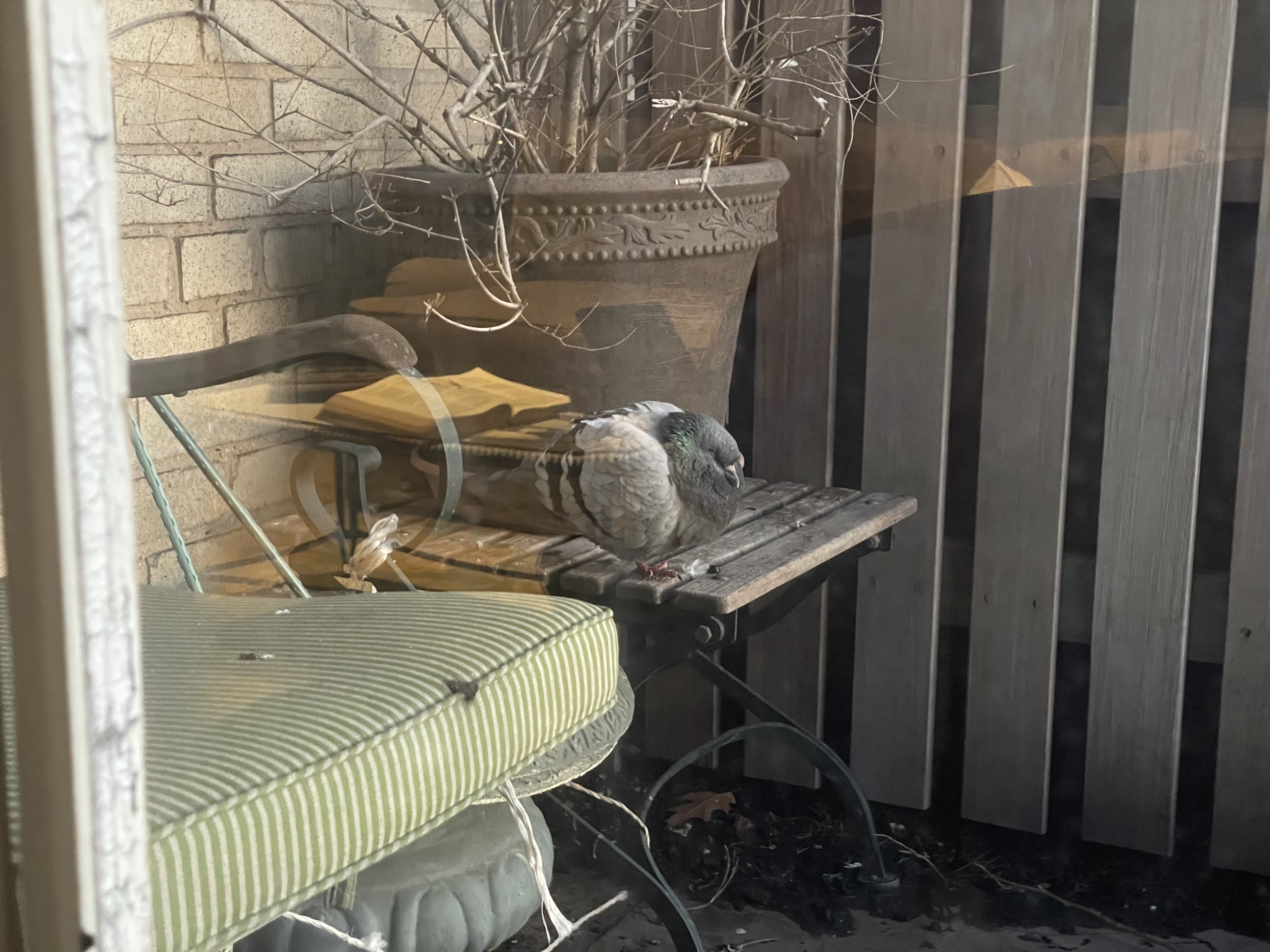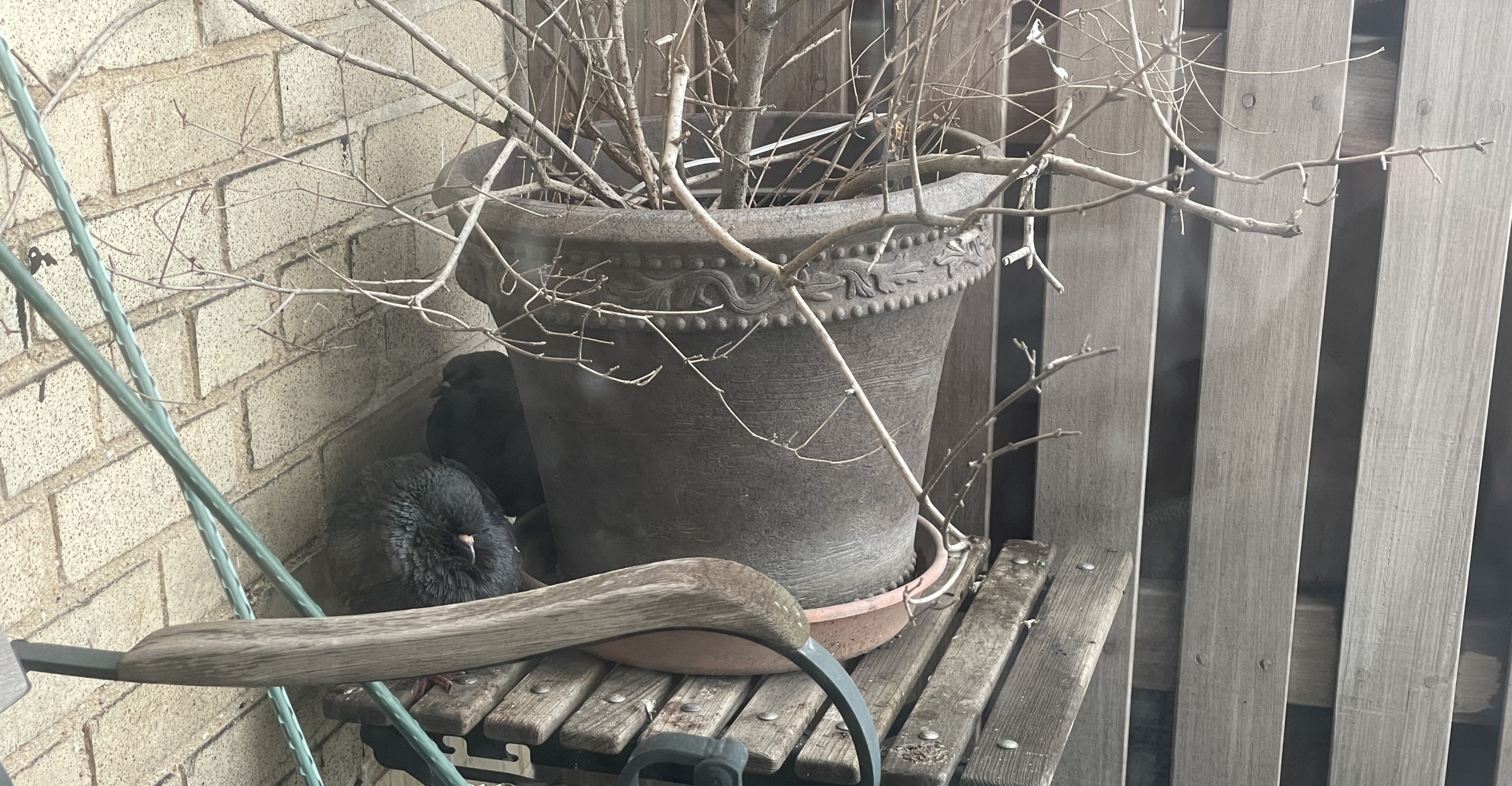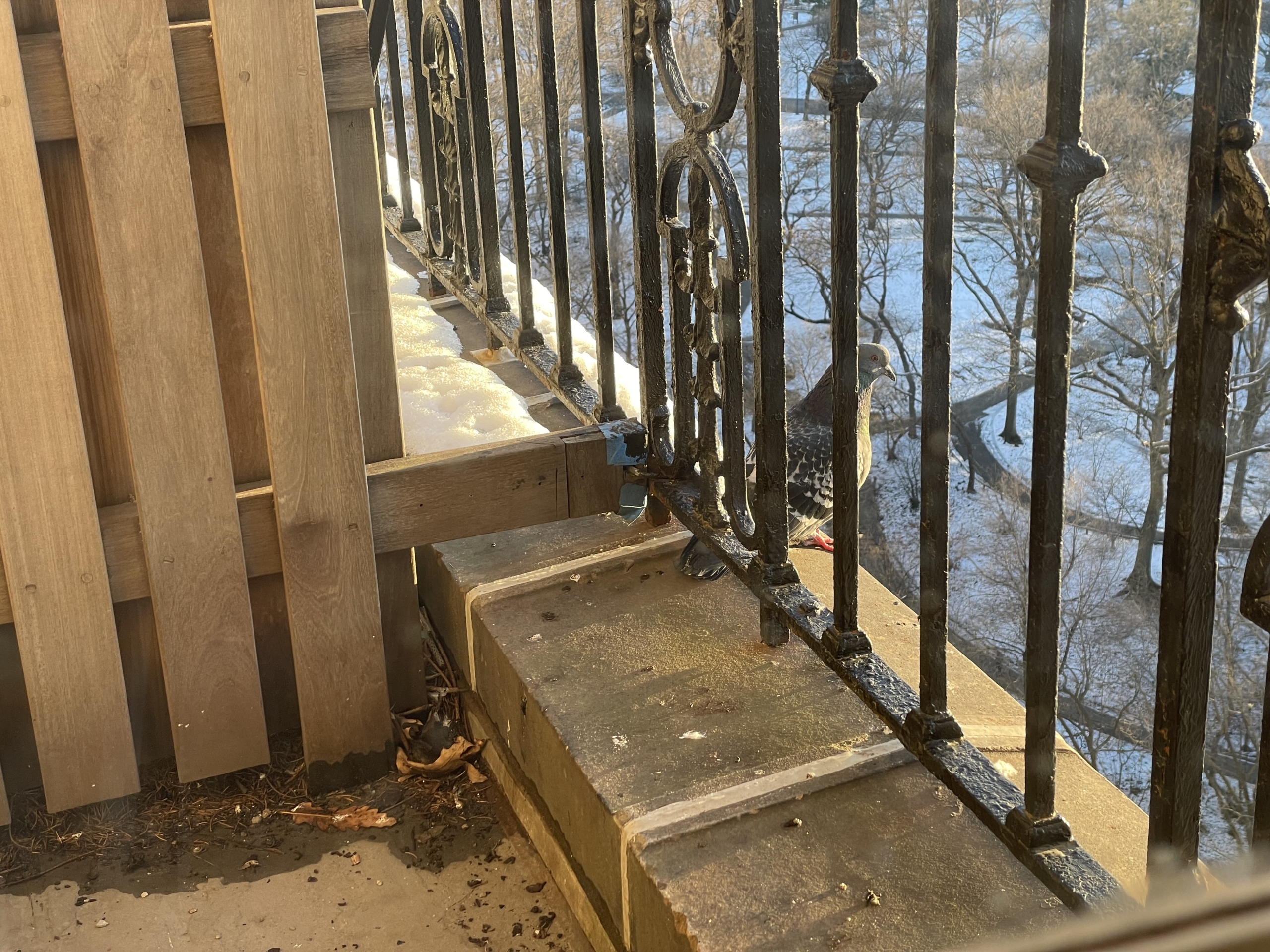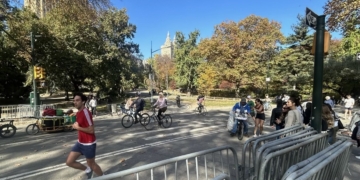
By Carol Tannenhauser
Paul Simon may get the news he needs on the weather report (song, anyone?), but I turn to my pigeons.
The day after our first snowstorm, I knew it was bitter cold before my iPad booted up, because I checked my pigeons. I saw what I believe is the female of the brood, puffed up like a softball! (I ran for my phone to snap a photo, but neglected to turn off the inside light, thus the open book on her tail.) Pigeons puff up their feathers because it increases “the efficiency of their feathers’ insulating abilities,” I had learned from a park ranger. From an exterminator who came up on Google, I learned much more:
When pigeons puff up their chest and fluff out their feathers during sleep, it serves a vital purpose in maintaining their body temperature. Just like humans bundle up in winter coats to stay warm, pigeons create an insulating air layer by fluffing up their feathers. This allows them to trap a layer of air close to their bodies, effectively acting as a natural heating pad set on low.
Furthermore, pigeons have a remarkable ability to adjust the position of their feathers to either trap or release heat, much like an adjustable thermostat. By slightly altering the angle and spacing between the feathers on their chest and other body parts, they can regulate how much heat is trapped within those layers. This mechanism helps them maintain a comfortable body temperature even when faced with fluctuating environmental conditions.
It dawns on me that I should name the pigeons, as they are clearly dug in for the winter.

They live behind a large flower pot on a small table on a three-foot by three-foot terrace off my living room. They are clearly a couple — of what, I’m not sure. Friends? Maybe, but, aside from the sleeping arrangements, I have seen them, what I believe was, kissing. If they had only done it once I would question my conclusion, but numerous times I watched them, on the terrace’s ledge, facing each other and tapping their beaks together repeatedly. Then, the one I believe is male — let’s call him Pete — flies off, leaving his mate — let’s call her Pat — on the ledge, distraught, cooing loudly, pacing, and twirling around in circles. Pete is gone for much of the day, leaving Pat to fend for herself.

Twice now, Pat has had to defend their turf — both times from a pigeon who looked a lot like her. Their first fight was serious — wings rose, beaks pecked, feathers flew — but I broke it up by banging the terrace door shut. The interloper flew away, but returned the next day, when Pete was there. It was two against one then and she has stayed away since — until Wednesday morning, when she paid a rather subdued visit, perhaps to see if the space had opened up. With a lift of her wings, Pat let her know it hasn’t.
To be continued if and when something notable occurs.
Subscribe to WSR’s free email newsletter here.









I LOVE pigeons. Keep the saga going.
I wish I’d known you when my balcony was wall-to-wall pigeon droppings from a nesting pair that had taken up residence and refused to be ousted. I’d gladly have brought them down to your place! 😉
Good drama! Is there some cozy nesting material you can leave in the area of the flower pot? Just in case?
Hate to throw cold water on the subject, but we had a nest with eggs that hatched on our windowsill. When the hatchlings fledged, their legions of hungry mites crawled under the windows to swarm our walls. The super dispatched them and sent the empty nest down to the courtyard with a broom. Yes, the birds were charming.
The mites, not so much….
Plus when the fledglings decide to start exploring and inevitably fall off the ledge…and are down below with parents who will become frantic….been there, done that – the cuteness starts to wear off!
The first photograph is SO beautiful – the warmth of inside glowing above the fluffed up body outside trying to stay warm.
And just wondering how you can tell that “Pat” is not “Pete”? The males typically defend territories more often and are more vocal with cooing – but maybe you have some other clues?
Thank you all for your comments. Julia, you might be right; ‘Pat” does behave as you are describing. I must reassess my original assumptions.
Girl birds “swing their hips” when they walk. The men’s walk is more tilted forward and shoulder-oriented.
I was about to write you with the same gender advice. Thank you very much for sharing your love of New York’s finest wildlife ambassador.
I’m loving this story and pictures. Please keep it coming. I’ve always wondered why we never see baby pigeons in the city. Maybe your story will finally provide an answer. Who knows!
Absolutely keep the pigeon saga coming! That flower pot definitely looks like a nest place to me. Perhaps move it away from the wall so mites don’t invade inside.
Pidgeon’s are amazing and get such a bad rap. They mate for life and I am sure you have a nest outside. Would you help they along a bit by maybe creating a protection for them in a box with newspaper and such—try to give them some warmth..and water and food. They all have to go after the little crust of pizza. They are hungry. People think they are “fat”—-they are skin and bones under the feathers. Thank you